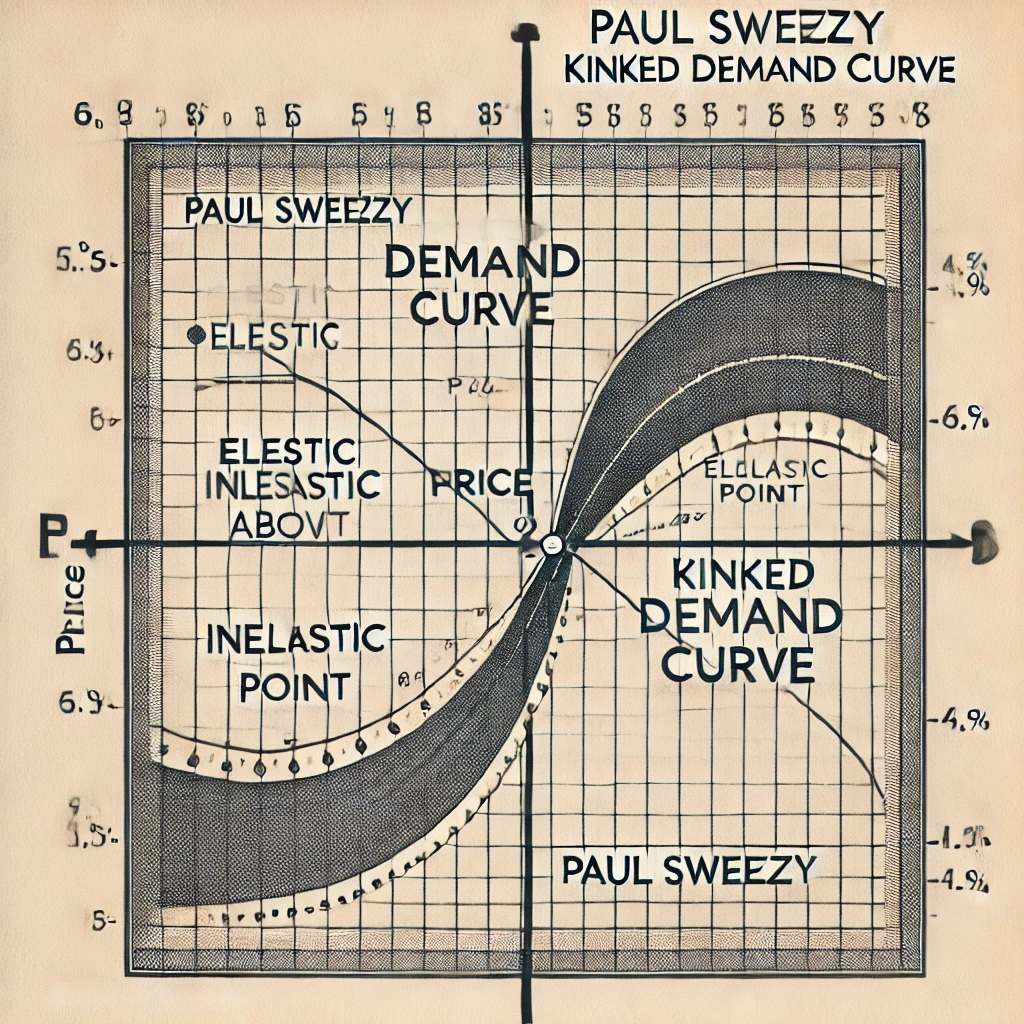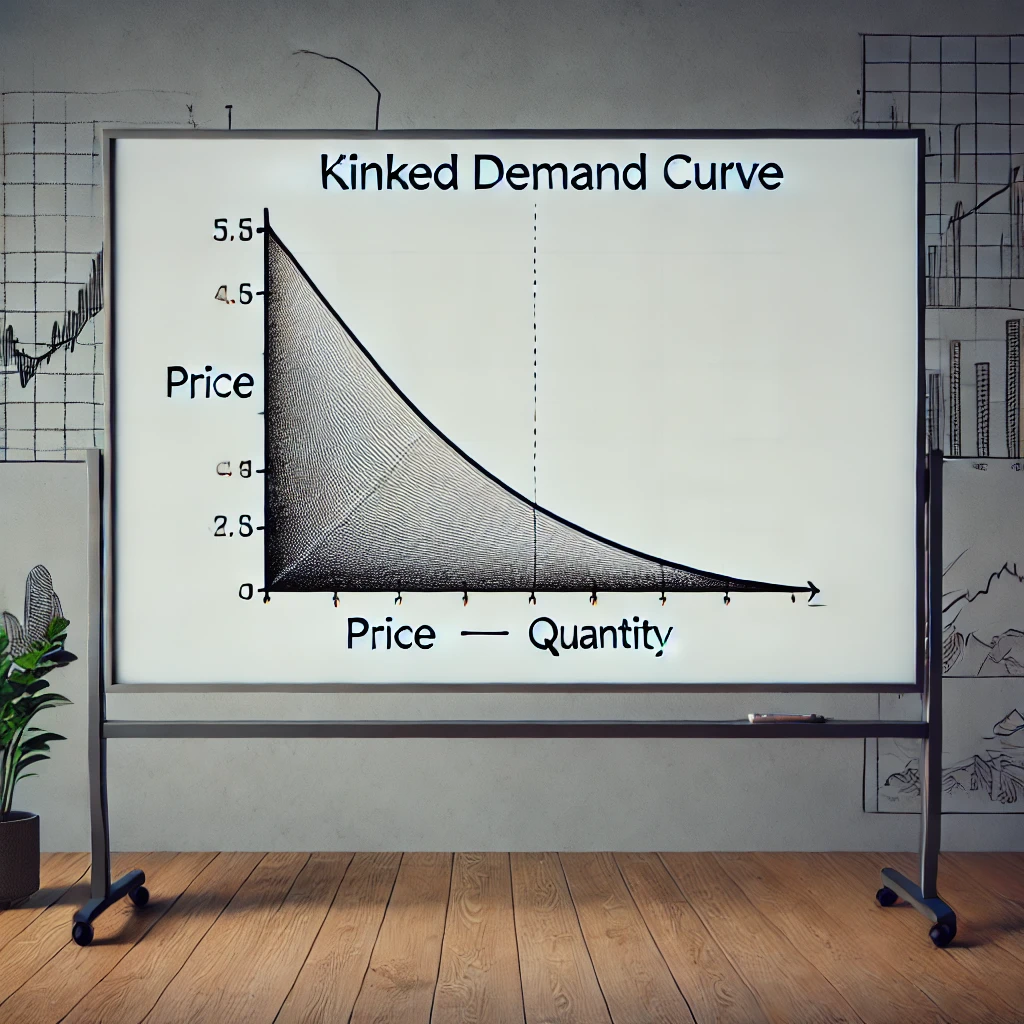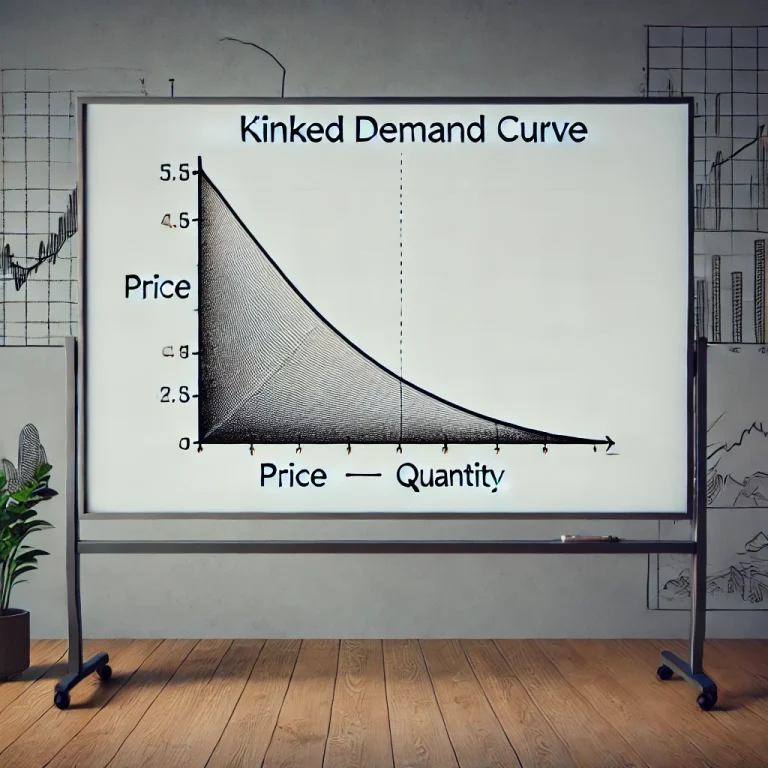The kinked demand curve has a very important role in the issue of pricing behavior amongst oligopolistic firms. The kinked demand curve refers to when the demand curve has a clear kink, meaning that there are curves of elasticity split between increasing prices or decreasing prices. It explains how oligopolistic firms react to the change in price by their competitors within the competitive market.
What is Kinked Demand Curve?
The kinked demand curve is a theoretical model that explains price stability in oligopoly markets where a small number of firms dominate. The model describes that a firm’s demand curve would have a bend or “kink” at the current price level. Below the kink, it is more inelastic, and above, it is more elastic because it crosses the curve when the price increases and when the price decreases. This model argues that the asymmetric response of rivals makes it indifferent to changing prices for firms.
Key Features of Kinked Demand Curve Model
- Above the Kink: When the firm raises its price, there is a small and decreasing possibility that its rivals will do the same, and so sales topple rather sharply.
- Below the Kink: When a firm reduces its price, its rivals are likely to match this price cut. So, increasing sales do not creep up that sharply.
This once again allows the marginal revenue curve to have a kink or discontinuity at the top, which makes price rigidity in the market even stronger.
Characteristics of Kinked Demand Curve
The kinked demand curve has several distinct characteristics that make it unique in the context of oligopoly markets:
- Price Stability: For a prolonged period, prices are stable. Since an individual cannot be certain about the reactions of others, no organization is ready to alter its price.
- Non-Continuous Marginal Revenue Curve: The marginal revenue curve associated with the kinked demand curve is not continuous. That gap represents that tiny changes in marginal costs will not raise the optimal price level and hence can be a cause for price stickiness.
- Differences in Elasticity: The top part of the curve is more elastic because an increase in price by one firm will not be followed through by rivals, and a tremendous quantity demanded will decline. The bottom part is inelastic because if a firm lowers its price, competitors are likely to follow, which entails a minimal increase in the quantity demanded.
Paul Sweezy and Kinked Demand Curve
The kinked demand curve was first developed by the economist Paul Sweezy in the 1930s. This theory describes oligopolistic price behavior.
Paul Sweezy’s Contributions
- Sweezy, meanwhile argued that firms in oligopoly are interdependent. This implies that every firm’s decision about the price influences other firms.
- He went ahead and proposed that firms take into account that if they raise prices, they perceive that their rivals would not do so and would result in a massive loss in market share.
- If they lower prices, on the other hand, they perceive that their rivals will lower their prices as well but they will only receive minimal increments in the market share.
Sweezy’s model provided a fundamental understanding of how the strategic interaction between firms leads to stable prices, even in the face of changing costs.

Oligopoly and Kinked Demand Curve
The kinked demand curve is most relevant in markets characterized as oligopolies, where a few dominant firms control the market.
Features of Oligopoly Markets:
- Interdependent Decision Making: The firm must consider what its rivals are most likely to respond to when they are determining their prices.
- Entry Barriers: In a situation like this, entry barriers are very high. As a result, entry of new firms is restricted, hence giving protection to the incumbents.
- Non-Price Competition: Since price rigidity prevails in oligopolistic firms, they have opted for non-price competition through advertising, product differentiation, and better services for customers.
Understanding the kinked demand curve helps explain why price wars are rare in oligopolies, as firms focus more on strategies other than price reductions to gain a competitive edge.
Impact of a Price Increase
When a firm considers raising its price in an oligopoly market with a kinked demand curve, the response can lead to significant outcomes.
Consequences of a Price Increase
- Elastic Response Above the Kink: The demand curve’s upper portion is elastic so prices will have a large impact if raised.
- Loss of Market Share: Since prices rise, customers could shift to those firms whose prices have not risen, leading to a large loss in sales volume.
- Competitor Response: Competitors are less likely to retaliate by raising their price since they would want to capture the lost customers from the firm whose price increased.
This effect of a price increase underpins the reluctance of firms to raise prices in oligopolistic markets.

Impact of a Price Decrease
Lowering prices in an oligopoly market also has unique implications due to the kinked demand curve’s structure.
Consequences of a Price Decrease
- Inelastic Response Below the Kink: Part of the demand curve is inelastic, with a small increase in quantity demanded.
- Price Matching by Competitors: Competitors will match the price cut to defend market share, and this takes away much of the competitive advantage from the firm initiating the price cut.
- Diminishing Returns: Since all the firms reduce their price, all the benefits of the cut in price would get wasted at diminishing returns with minimal upward growth in the sales overall.
This response mechanism discourages firms from engaging in price competition, reinforcing the overall price stability in oligopolistic markets.
Conclusion
The kinked demand curve model is a fundamental tool in tackling price rigidity within oligopoly markets. It describes how firms are strategically interdependent as far as pricing decisions are concerned, thus resulting in stable prices even in the changed market conditions. Paul Sweezy came up with this model and happens to provide some valuable insights into the behavior and unwillingness of firms to shift prices, characteristic of competitive oligopolistic structures.
Kinked Demand Curve FAQs
What is the kinked demand curve theory?
The kinked demand curve theory suggests that in oligopoly markets, firms face different elasticities for price increases and decreases, leading to price stability.
Who developed the kinked demand curve model?
Paul Sweezy popularized the kinked demand curve model to explain the pricing behavior of firms in oligopolistic markets.
How does a price increase affect the kinked demand curve?
A price increase above the kink causes the demand curve to be elastic, leading to a significant loss in sales as competitors do not follow the price change.
What happens when a firm lowers its price in a kinked demand curve scenario?
When a firm reduces its price, the demand curve is inelastic below the kink, leading to only a minor increase in sales, as competitors quickly match the price cut.
Why is the kinked demand curve important in oligopoly markets?
The kinked demand curve is important because it helps explain why prices in oligopoly markets tend to remain stable, as firms avoid price changes that could destabilize the market equilibrium.


